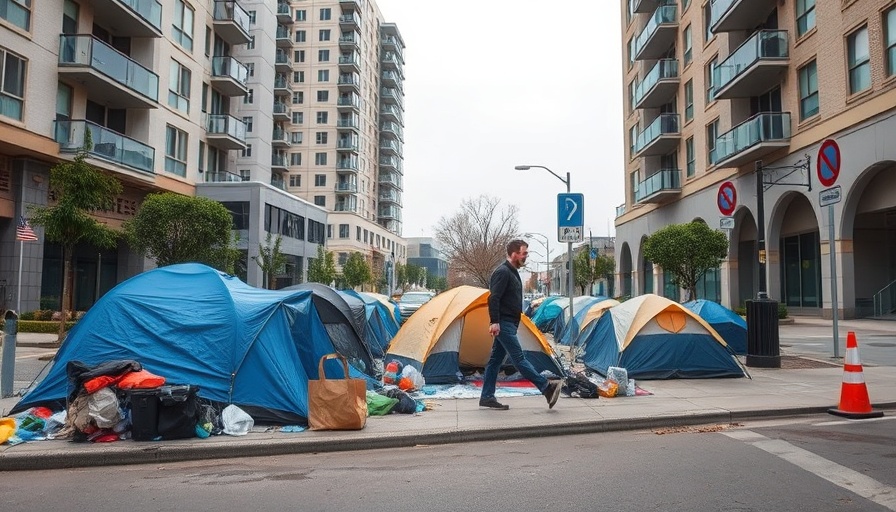
The Rising Tide of Homelessness in California
California, known for its innovation and scenic beauty, has become synonymous with a growing humanitarian crisis: homelessness. With more than 187,000 individuals without stable housing, California accounts for a shocking quarter of the nation's homeless population. This alarming statistic underscores the urgency of the issue and is reflective of systemic failures in addressing the needs of vulnerable populations.
Gov. Gavin Newsom's Call to Action
In response to the escalating crisis, California Governor Gavin Newsom has publicly urged cities and counties to adopt stricter measures against homeless encampments. At a recent press conference, Newsom announced a new statewide blueprint outlining the ban on encampments, emphasizing a collective responsibility among local leaders. “No more excuses,” he asserted, pushing for a proactive approach to reclaim public spaces from the despair evident in makeshift camps lining streets, underpasses, and parklands.
Funding and Support for Solutions
Newsom’s announcement came alongside a significant financial commitment of over $3 billion in grants dedicated to developing facilities aimed at assisting homeless individuals, particularly those grappling with mental health and substance abuse issues. By coupling policy with funding, Newsom hopes to offer not just a ban on encampments but a pathway toward meaningful alternatives. His model ordinance encourages cities to provide proper notice and sufficient shelter options before clearing encampments, highlighting the necessity of compassion amid the crackdown.
The Role of Local Governments
Local leaders are not waiting for state directives; several cities have already begun implementing measures to address the homelessness crisis. San Francisco’s Mayor Daniel Lurie has committed to enhancing the cleanliness of city sidewalks, while San Jose Mayor Matt Mahan has proposed stringent policies, including penalties for those refusing shelter offers multiple times. Los Angeles Mayor Karen Bass has placed the clearing of encampments as a high priority, although encampments remain prevalent across the city.
Legal Context and Challenges
The legal landscape surrounding homelessness has shifted recently, particularly with the U.S. Supreme Court's endorsement of local municipalities' rights to ban outdoor camping. This ruling, celebrated by some city leaders, presents a complex dichotomy; advocates for the homeless view such decisions as cruel and counterproductive, pushing the marginalized further into the shadows of society. As California grapples with these legal and ethical challenges, the need for balanced, compassionate solutions becomes paramount.
The Societal Implications
The increasing visibility of homelessness raises questions about societal values and priorities. Newsom’s approach invites a broader dialogue on how communities can best confront this issue without resorting to punitive methods that exacerbate human suffering. The challenge lies not just in enforcement but in creating a system that balances accountability with empathy. What alternatives can be provided to ensure dignity for all residents, including those without homes?
Public Reaction and Future Prospects
Community responses to these proposed changes are mixed. While many residents welcome steps towards improved public safety and aesthetics, others express concern over the potential demonization of those experiencing homelessness. It speaks to a societal tension: how to restore order while simultaneously offering compassion. Moving forward, it is crucial to monitor how these policies play out on the streets of California and what impact they might have on public perception and community dynamics.
Conclusion: The Road Ahead
As we navigate forward, Governor Newsom’s initiative serves as a critical juncture in California's ongoing battle with homelessness. The blueprint for encampment bans and significant funding is a step towards addressing deep-seated crises affecting communities across the state. It remains to be seen how local governments will interpret Newsom's call to action and whether a comprehensive, compassionate approach can ultimately guide California toward a future where homelessness is not the norm.
 Add Row
Add Row  Add
Add 




 Add Row
Add Row  Add
Add 








Write A Comment